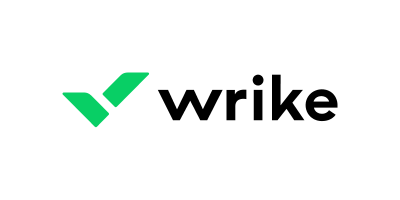In the fast-paced world of technology, choosing the right project management tool is vital for success. This article delves into the top seven project management tools for software developers and technology teams at large.
We compare their pricing, features, and pros and cons to help developers and tech professionals make informed decisions for streamlined collaboration and efficient project delivery.
Top 7 software development project management tools
| Software | Task management | Time tracking | Customization | Reporting and analytics | Integrations | Starting price (per month) |
|---|---|---|---|---|---|---|
| Jira | Advanced | Yes | High | Advanced | Extensive | Free tier; paid plans start at $7.75 per user |
| Wrike | Advanced | Yes | High | Advanced | Good | Free tier; paid plans start at $9.80 per user |
| ClickUp | Advanced | Yes | High | Advanced | Good | Free tier; paid plans start at $5 per user |
| Confluence | Limited | No | Moderate | Limited | Good | Free tier; paid plans start at $5.75 per user |
| monday work management | Advanced | Yes | High | Advanced | Good | No free tier; paid plans start at $8 per seat |
| Zoho Projects | Advanced | Yes | Moderate | Advanced | Good | Free tier; paid plans start at $5 per user |
| Basecamp | Moderate | Yes | Low | Moderate | Limited | No free tier; paid plans start at $89 for up to 10 users |
Featured partners
Jump to:
- What features should software development project management tools have?
- How to choose project management software for software developers
- Review methodology
Jira: Best for Agile project management

Jira is a powerful project management tool developed by Atlassian, designed specifically for Agile software development. It helps tech teams track issues, tasks and progress using customizable workflows. Its appeal as a software development project management tool lies in its robust feature set, including scrum and kanban boards, backlog prioritization, and a vast array of integrations, making it ideal for software teams of all sizes.
Pricing
- Free: No cost for 10 users for the monthly subscription only.
- Standard: $7.75 per user per month, billed monthly. $790 per year for one to 10 users.
- Premium: $15.25 per user per month, billed monthly. $1,525 per year for one to 10 users.
- Enterprise: Only billed annually. Available for teams with more than 800 users. Contact Jira sales for pricing information.
Standout features
Figure A
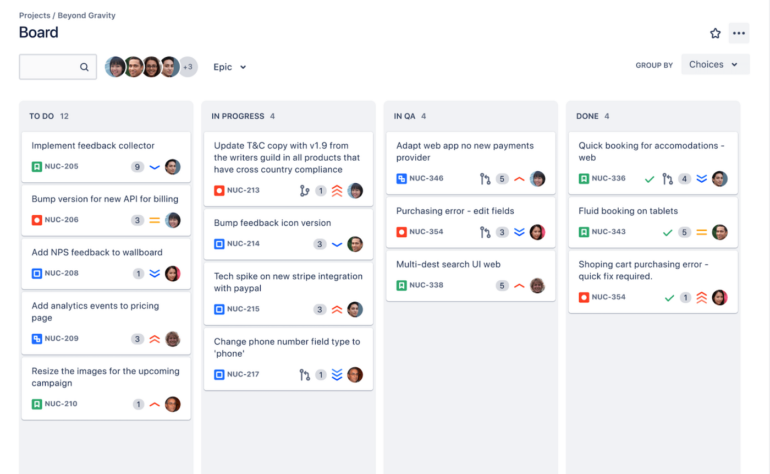
- Customizable workflows allow teams to create and adapt workflows to fit their development process, from scrum to kanban (Figure A).
- Issue tracking features enable teams to create, assign and track issues, such as bugs and feature requests, ensuring that they are resolved efficiently.
- Agile planning tools, including sprint planning and backlog grooming, help teams prioritize and organize their work.
- Built-in time tracking tools allow team members to log the time spent on tasks and provide managers with insights into resource allocation.
- Jira integrates with other popular tools such as Confluence, Bitbucket, Slack and more, making it a versatile choice for tech teams.
Pros
- Robust and powerful platform tailored for software development teams.
- Highly customizable to meet specific project requirements.
- Scalable and suitable for both small and large teams.
- Supports multiple Agile methodologies.
- Strong integration capabilities.
Cons
- Steeper learning curve compared to other tools.
- Can be time-consuming to set up and configure.
Wrike: Best for reporting capabilities

Wrike is a versatile project management software for developers that supports various work styles, including agile, waterfall and hybrid methodologies. Its value to software development teams stems from its customizable dashboards, real-time collaboration features and robust reporting capabilities. Wrike enables seamless communication and efficient work allocation, streamlining the development process.
Pricing
- Free: $0 per user per month.
- Team: $9.80 per user per month.
- Business: $24.80 per user per month.
- Enterprise: Contact Wrike for a quote.
- Pinnacle: Reach out to Wrike for pricing information suitable to your complex work needs.
Standout features
Figure B
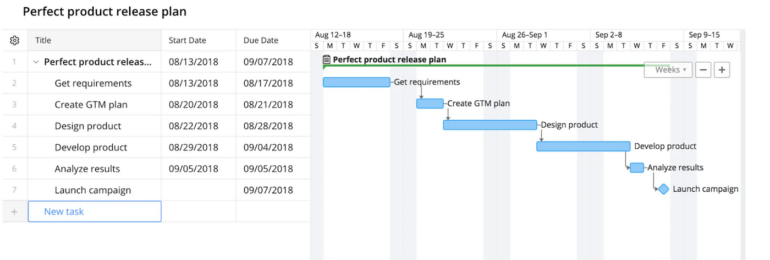
- A powerful task management system with custom fields, subtasks and dependencies, allowing teams to manage complex projects.
- Interactive Gantt charts (Figure B) which help teams visualize project timelines and dependencies.
- Resource management to enable managers to allocate resources and track team members’ workloads, ensuring that projects are delivered on time and within budget.
- Real-time collaboration tools, such as file sharing, version control and document editing, streamline team members’ communication.
Pros
- Flexible and customizable to various project management approaches.
- Real-time updates and collaboration capabilities.
- Built-in time tracking and resource allocation tools.
- Scalable for small and large teams.
Cons
- Less specialized for software development compared to Jira.
- May require additional integrations for complete software development support.
ClickUp: Best for customization and versatility

ClickUp is an all-in-one project management tool that aims to replace multiple productivity apps. As a software development project management tool, software and tech teams in general find value in its flexibility, offering customizable views, task hierarchies and native time tracking. It integrates well with popular development tools and its automation capabilities make it a powerful choice for streamlining software development workflows.
Pricing
- Free: Free forever for personal use with unlimited number of users.
- Unlimited: $5 per user per month billed annually, $9 per user per month billed monthly.
- Business: $12 per user per month billed annually, $19 per user per month billed monthly.Business Plus: $19 per user per month billed annually, $29 per user per month billed monthly.
- Enterprise: Reach out to ClickUp sales for pricing information.
Standout features
Figure C
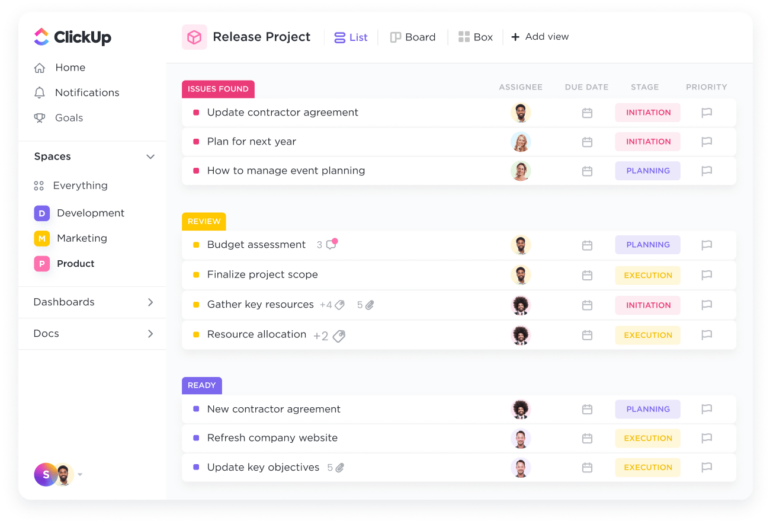
- Many customizable views (Figure C), such as List, Board and Timeline, allowing teams to visualize tasks and projects in different ways.
- Customizability to enable teams to tailor their workflows to fit their specific development processes without the requirement of code or add-ons.
- Native time tracking and time estimates, helping teams manage their workload and deadlines.
- Real-time collaboration features to deliver a visual canvas for teams to collaborate on ideas and workflows.
Pros
- User-friendly interface and intuitive design.
- Highly customizable and adaptable to various project management approaches.
- Comprehensive feature set for team collaboration and communication.
- Cost-effective with a free tier that does not limit the number of users available.
Cons
- Less focused on software development compared to Jira.
- Customization may lead to complex configurations.
Confluence: Best for collaboration for virtual teams
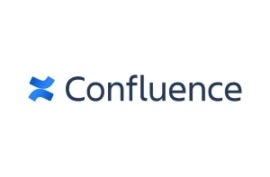
Confluence, another Atlassian product, is a collaborative workspace designed to help teams create, organize and share documentation. Tech teams may find its seamless integration with Jira attractive, making Confluence a powerful knowledge base for developers. With real-time editing, version control and advanced search features, the software development project management tool facilitates efficient knowledge sharing and collaboration.
Pricing
- Free: $0 for ten users for the monthly subscription only.
- Standard: $5.75 per user per month billed monthly. $580 per year for a user tier of 1-10.
- Premium: $11 per user per month billed monthly. $1100 per year for a user tier of 1-10.
- Enterprise: Only billed annually. Available for teams with more than 800 users. Contact Confluence sales for pricing information.
Standout features
Figure D
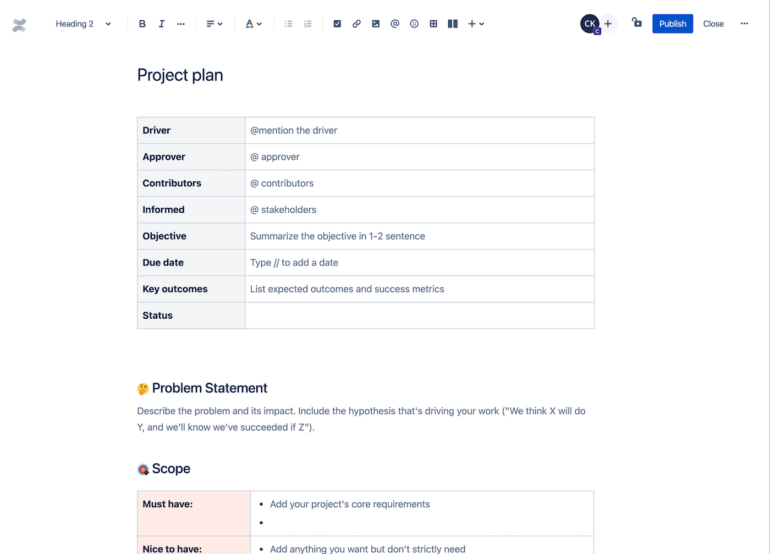
- Templates (Figure D) such as technical documentation, meeting notes and product requirements, to help teams get started quickly.
- Knowledge management features allow teams to create, organize and search through a centralized knowledge base, making it easy to find and share information.
- Collaboration features include real-time editing and commenting, allowing team members to collaborate effectively on documents.
- Seamless integration with Jira, as well as other popular tools like Trello and Slack, making it a valuable addition to a tech team’s toolkit.
Pros
- Designed for documentation and knowledge sharing among tech teams.
- Seamless integration with Jira for project tracking.
- Real-time editing and collaboration capabilities.
- Supports various content types, including rich media.
Cons
- Not a standalone project management tool.
- Steeper learning curve for non-technical users.
monday work management: Best for a balanced project management solution

monday work management is a visual project management solution that helps teams plan, track and deliver projects effectively. Tech teams will find its customizable and user-friendly interface to be useful as it allows them to easily visualize project progress and collaborate on tasks. The platform also offers automation and integration with popular tools, streamlining workflows and boosting productivity, making it a worthy consideration as a project management software for developers.
Pricing
- Individual: Free forever, up to two seats.
- Basic: $8 per seat per month, billed annually.
- Standard: $10 per seat per month, billed annually.
- Pro: $16 per seat per month, billed annually.
- Enterprise: Contact monday work management sales for pricing information.
Standout features
Figure E
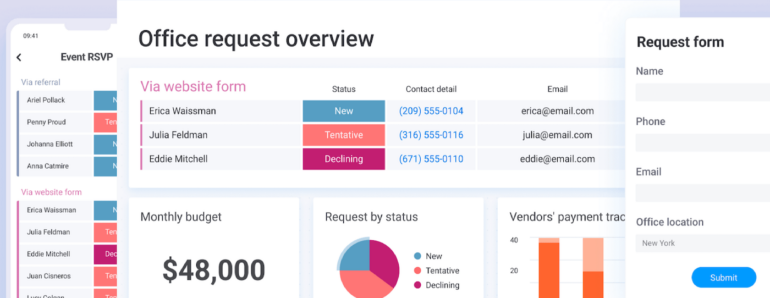
- Visual project tracking through a variety of customizable board (Figure E) views enabling teams to easily track progress and stay aligned.
- Customizable workflow automation for automating repetitive tasks and creating custom integrations to streamline processes, helping tech teams save time and reduce errors.
- Advanced reporting allows users to generate data-driven insights with powerful analytics and customizable dashboards to improve project management efficiency and team performance.
- Integrations seamlessly connect with various tools and platforms, such as GitHub, GitLab and Jira, to enhance collaboration and information sharing among team members.
- Time tracking enables project managers to monitor work hours and project deadlines to optimize resource allocation and ensure timely delivery.
Pros
- Intuitive and visually appealing interface.
- Easy to set up and use.
- Highly customizable for various workflows.
- Strong collaboration and communication features.
Cons
- Less specialized for software development compared to Jira.
- Limited support for Agile methodologies.
Zoho Projects: Best for small and scaling teams
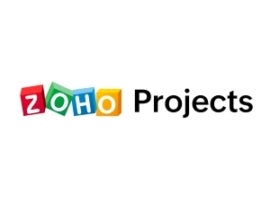
Zoho Projects is a cloud-based software development project management tool that offers comprehensive features tailored for software development teams. Its appeal stems from its ability to manage tasks, track progress and collaborate in real time. With built-in issue tracking, time tracking and customizable workflows, Zoho Projects simplifies project management while integrating seamlessly with other Zoho applications.
Pricing
- Free: $0 for up to three users.
- Premium: $5 per user per month.
- Enterprise: $10 per user per month.
Premium and Enterprise tiers offer a 10-day free trial.
Standout features
Figure F
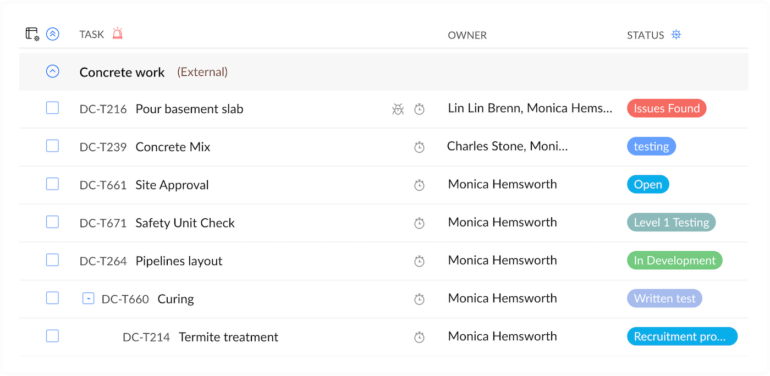
- Task management features to organize tasks into task lists (Figure F), set dependencies and assign them to team members to ensure efficient project execution.
- Time tracking and timesheets help teams to track billable and non-billable hours and generate timesheets for effective resource management.
- Gantt charts for visualization of project timelines, dependencies and progress to stay on track and make informed decisions.
- Issue tracking allows teams to log, categorize and prioritize bugs and issues and assign them to team members for resolution.
- Integration with developer tools facilitates connections with popular platforms like GitHub, Bitbucket and GitLab to manage code repositories and facilitate version control.
Pros
- Affordable pricing structure.
- Comprehensive feature set for project management.
- Integration with Zoho Suite and other third-party applications.
- Suitable for both traditional and agile project management approaches.
Cons
- The interface can be unintuitive and dated.
- Less specialized for software development compared to an alternative like Jira.
Basecamp: Best for collaboration for midsize businesses

Basecamp is a simple yet powerful project management tool that organizes projects into separate, self-contained workspaces. Tech teams may consider Basecamp due to its straightforward interface, built-in real-time chat and file-sharing capabilities. With to-do lists, milestones and message boards, Basecamp provides an easy-to-use, centralized platform for software development teams to collaborate effectively.
Pricing
30-day free trial.
- Team: For up to 10 users, $89 per month when billed annually and $99 per month when billed monthly.
- Business: For up to 10 users and unlimited clients, $179 per month when billed annually and $199 per month when billed monthly.
- Unlimited: For unlimited users and clients, $269 per month when billed annually and $299 per month when billed monthly.
Standout features
Figure G
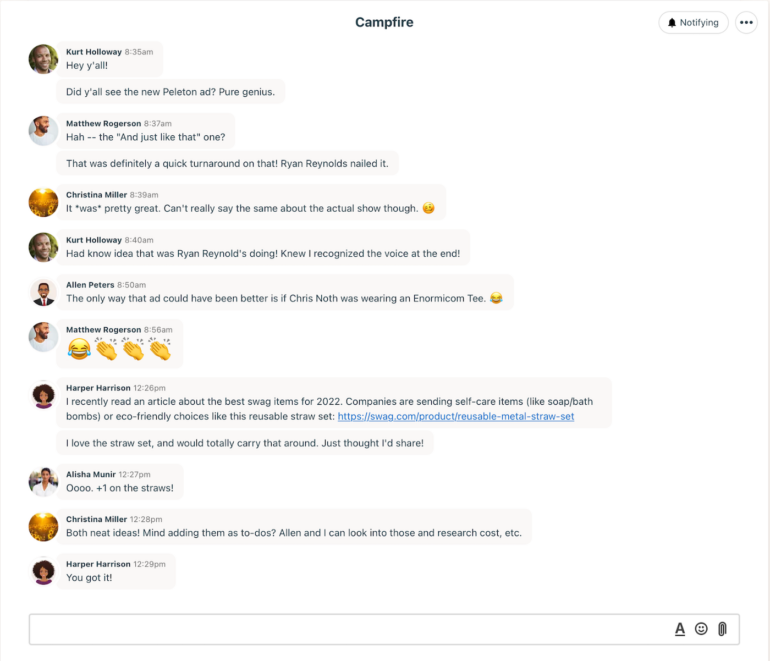
- Campfire (Figure G), Basecamp’s built-in chat tool, for real-time chat features to enable quick conversations and team collaboration.
- To-do lists to organize tasks, set deadlines and assign them to team members, ensuring a clear division of responsibilities.
- Scheduling enables the coordination of meetings, events and milestones with integrated calendars, making it easy to track deadlines and stay organized.
- Automatic check-ins help teams gather regular status updates from team members, ensuring accountability and progress monitoring.
Pros
- User-friendly interface.
- Centralized communication.
- All-in-one solution, since it delivers a comprehensive suite of project management features.
- Integration with third-party applications.
Cons
- Limited customization compared to some of its alternatives.
- Limited for Agile as it lacks features such as kanban boards and Gantt charts.
What features should software development project management tools have?
Task management
Software development project management tools should enable the creation, assignment, tracking and prioritization of tasks. This ensures that teams complete their project milestones in a timely manner.
Collaboration
Collaboration features are crucial for efficient software development processes today, especially due to the emergence of remote work. Seamless communication and file-sharing capabilities are crucial for fostering teamwork and resolving issues efficiently. Integrations with popular communication tools, such as Slack or Microsoft Teams, can be beneficial to tech teams.
Time-tracking
Time-tracking is a crucial feature for software development project management tools, as it helps teams monitor the time spent on various tasks and activities. This feature enables developers, project managers and stakeholders to understand the allocation of resources and project progress better. Time tracking also aids in identifying bottlenecks, improving productivity and refining future project estimates.
Version control
Version control is a must-have feature that allows developers to manage changes in source code, documents and other project files. It helps teams collaborate more efficiently by providing a centralized repository, tracking modifications and enabling the restoration of previous versions when needed. Integrations with version control systems like Git or SVN are essential for tracking code changes, managing branches and preventing conflicts during development.
Agile methodologies support
Agile methodologies such as scrum and kanban are widely used in software development projects to promote adaptability and collaboration. Project management tools should support these methodologies by providing features like customizable task boards, sprints, burndown charts and backlog management.
Reporting and analytics
Data-driven insights and visualizations help identify bottlenecks, monitor progress and make informed decisions for continuous improvement.
Integration capabilities
The ability to integrate with other tools and platforms is key for software development project management tools. These tools and platforms include IDEs, CI/CD pipelines or bug-tracking systems to streamline the development process and reduce manual effort.
How to choose project management software for software developers
When choosing project management software for software developers, you should consider the following factors:
- Usability: Select a tool with an intuitive interface, a comfortable learning curve and customizable features to suit the team’s workflow.
- Integration: Opt for software that integrates with essential development tools, such as version control systems, bug tracking and CI/CD pipelines.
- Scalability: Choose a solution that can accommodate team growth and handle increased workloads.
- Security: Ensure the software has robust security measures to protect sensitive information.
- Budget: Consider the pricing model and ensure it aligns with the team’s budgetary constraints.
- Support: Opt for a solution with reliable customer support and an active user community for troubleshooting and best practices.
Review methodology
We listed the tools above based on the features that are crucial for software and tech teams in general. We then went through reputable rankings and user reviews from sources such as G2 to augment our research. Finally, we tried out some of the tools to gain a first-hand feel alongside examining their websites and datasheets to enhance our assessment of how useful they are to tech teams.
Read next: Top project management software for Mac users in 2023 (TechRepublic)


